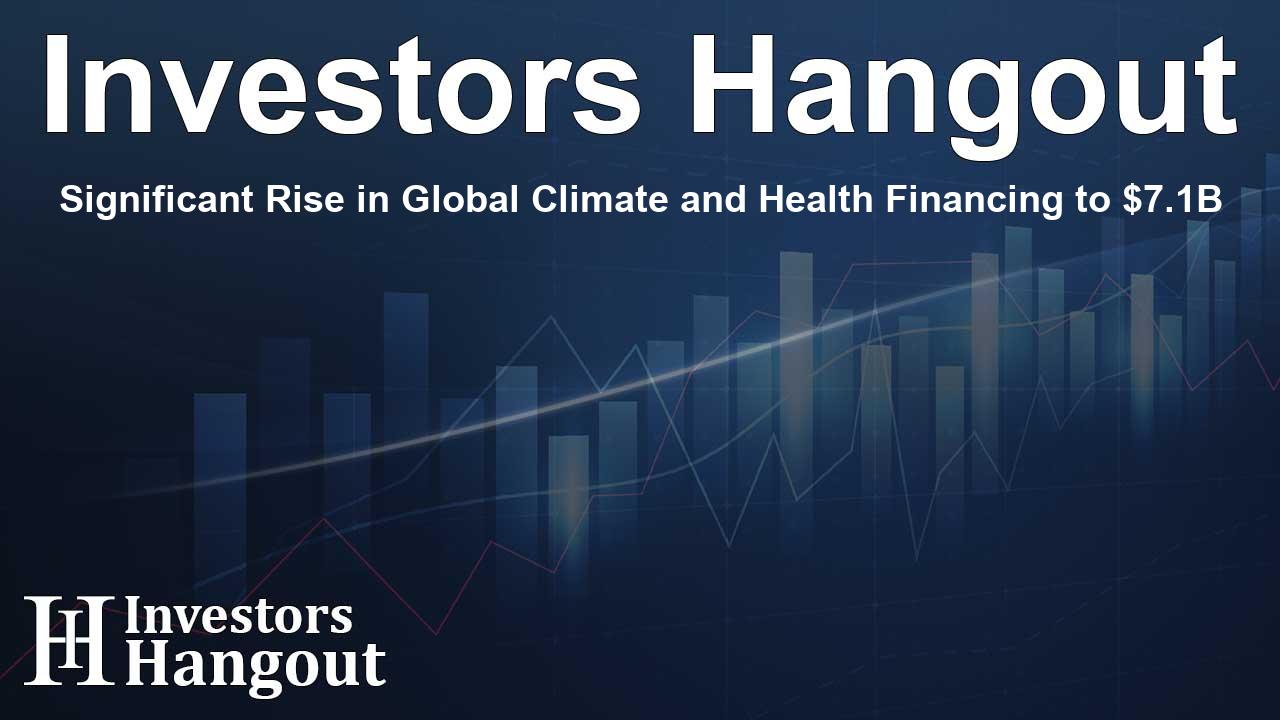Significant Rise in Global Climate and Health Financing to $7.1B

Funding for Climate and Health Escalates
The latest analysis reveals that international financing for climate and health reached an impressive US$7.1 billion in 2022, marking a substantial increase compared to under US$1 billion in 2018. This study, crafted by notable organizations, underscores the urgency of addressing the health impacts of climate change, while emphasizing the need for accessible funding for the most vulnerable nations.
Challenges in Financing Accessibility
Despite the growth in funding, the report points out that less than 35% from bilateral donors directly benefits the most climate-impacted countries. It also highlights that nearly 50% of overall finance does not reach low-income nations, thereby raising concerns regarding equity in climate health financing.
Expert Insights on Funding Needs
Dr. Naveen Rao, Senior Vice President at The Rockefeller Foundation, stated, "Although the funding increase indicates a growing awareness of climate health, it remains insufficient. There needs to be a concerted effort from both public and private sector donors to ensure the funds effectively support communities in need."
Comprehensive Analysis of Financial Commitments
Conducted by SEEK Development with partners, the analysis elaborates on various components of climate and health financing. In 2022, bilateral donors contributed US$4.8 billion, followed by US$1.5 billion from health multilateral funds, and US$0.6 billion from development banks. Philanthropic contributions totaled US$130 million, with climate multilateral funds adding US$23 million.
Shifting Trends in Health Investments
The trend towards inclusivity in financing is notable, as the share of climate-specific finance directed towards health rose to 9% in 2022, up from just 1% in 2018. However, there remains a significant reliance on loans over grants, with over 90% of funding from some development banks categorized as loans.
Adapting to Address Urgent Needs
Vanina Laurent-Ledru from Foundation S emphasizes the pressing need for accessible financing, stating, "Countries facing the brunt of climate change require more transparent and rapid funding solutions that directly empower communities to build resilient health systems." This sentiment underscores a growing recognition of the need for urgency and adaptability in funding approaches.
Opportunities for Transformative Change
Nassar Al Mubarak, CEO of Reaching the Last Mile, mentions that well-directed climate actions can lead to significant transformations in nations. He advocates for robust, collaborative funding initiatives that target regions most at risk, especially with the pressing challenges of climate change looming.
Limitations and Future Directions
The report recognizes that donor commitments often vary in their definitions, complicating the landscape of climate health finance. As funding remains centralized and often cumbersome to access, the call for increased transparency and alignment in financing objectives is stronger than ever.
Concrete Steps for Improvement
To resolve these accessibility issues, the report suggests several actionable steps: enhancing climate and health funding, aligning investment priorities, accelerating funding delivery, facilitating direct funding to country priorities, and standardizing reporting definitions to foster clarity.
About the Analyzing Organizations
This groundbreaking analysis was created by the collaborative efforts of organizations focused on financing climate health initiatives. It aligns with initiatives aimed at fortifying health systems against climate impacts, further echoing the growing dedication among international partners to meet these challenging needs.
Frequently Asked Questions
What is the primary finding of the report regarding funding?
The report shows a substantial rise in climate and health funding to US$7.1 billion in 2022, yet highlights that much of it does not reach the most affected countries.
Why is accessibility to funds a significant concern?
Accessibility remains challenging as less than 35% of bilateral donor financing reaches severely impacted nations, hindering effective climate action.
What changes have taken place in health investments since 2018?
The proportion of climate finances directed towards health has increased from 1% in 2018 to 9% in 2022, indicating a positive shift towards integrated funding solutions.
What steps does the report propose to improve funding access?
The report suggests increasing the overall available funding, aligning investment frameworks, and standardizing definitions to simplify and expedite access to financing.
Who contributed to this analysis?
The analysis was conducted by SEEK Development in collaboration with adelphi consult and AfriCatalyst, alongside input from multiple funding organizations and experts.
About The Author
Contact Caleb Price privately here. Or send an email with ATTN: Caleb Price as the subject to contact@investorshangout.com.
About Investors Hangout
Investors Hangout is a leading online stock forum for financial discussion and learning, offering a wide range of free tools and resources. It draws in traders of all levels, who exchange market knowledge, investigate trading tactics, and keep an eye on industry developments in real time. Featuring financial articles, stock message boards, quotes, charts, company profiles, and live news updates. Through cooperative learning and a wealth of informational resources, it helps users from novices creating their first portfolios to experts honing their techniques. Join Investors Hangout today: https://investorshangout.com/
The content of this article is based on factual, publicly available information and does not represent legal, financial, or investment advice. Investors Hangout does not offer financial advice, and the author is not a licensed financial advisor. Consult a qualified advisor before making any financial or investment decisions based on this article. This article should not be considered advice to purchase, sell, or hold any securities or other investments. If any of the material provided here is inaccurate, please contact us for corrections.
